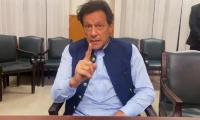Pakistan’s smartphone users continue to rely on imported technology. Since the Pakistani rupee continues to slide against the dollar, it makes sense that the government has decided to collaborate with the private sector to make mobile phones affordable for all.
The newly launched ‘Smartphone for All’ initiative relies on the installment sales method to increase consumers’ purchasing power. However, it is important to realize that affordability is not the only variable driving the country’s digital divide.
The government sees the ‘Smartphone for All’ initiative as the next step towards Digital Pakistan. It is meant to close the digital divide by bringing ‘youth, women, and rural communities’ into the digital ecosystem. The intent is to improve the socio-economic indicators of development and power the digital economy.
Smartphones have proved to be the most effective tools of development across the world. They have made service delivery faster, cheaper and reliable. So, the move is logical. But affordability is not enough to close the development gap. And connectivity infrastructure will not solve the puzzle either.
Availability of network infrastructure is a prerequisite for digital inclusion. And with a 20 per cent coverage gap, Pakistan needs infrastructural investments as much as it needs smartphone financing (the telecom sector needs to be heard and facilitated before it collapses).
But what it needs more is for the digital divide discussion to move from access to use, better yet appropriation. Limiting the discussion to access limits smartphone use to instant messaging and video calls (two of the top three online activities recorded for Pakistan’s smartphone users). If the definition of digital inclusion expands to socioeconomic opportunities and impact, we need a non-economic lens to see the barriers to digital adoption in Pakistan.
Why? Consider this. Pakistan scored 43.96 vs the South Asian average of 51.82, on the Mobile Connectivity Index (MCI) 2021 (published by GSMA, which is one of the collaborators on the Smartphone for All initiative). The MCI measures countries’ performance against key enablers of mobile phone connectivity. These enablers include infrastructure, availability, consumer readiness, and content and services. Naturally, if these enablers are poor, they become barriers to digital adoption.
Pakistan scored the lowest on Consumer Readiness, a meagre 26.52 (against the average of 50.22). Mobile phone ownership makes up only 20 per cent of the Consumer Readiness dimension in the MCI, and Pakistan scores the highest on it (47.23).
The picture gets bleaker when the other two sub-dimensions of Consumer Readiness are considered. Pakistan scores 30.72 on Basic Skills (the regional mean of 43.63) and a miserable 11.97 on Gender Equality (South Asia averages at 48.65). Pakistan’s score has improved by four points on the Basic Skills dimension and 0.58 points on Gender Equality since 2014.
What do these strange numbers tell us? Lack of literacy and digital skills are the two biggest barriers to digital adoption in Pakistan. And women continue to be excluded from the digital ecosystem as they have been from all other spheres of the economy and society. Therefore, making smartphones affordable will not help achieve the intended socioeconomic outcomes the government is pinning on its Smartphone for All initiative.
According to the MCI 2021 report, the highest number of respondents picked ‘difficulty in reading and writing’ as the most important constraint on using mobile internet. Pakistan ranks just above Guatemala and Senegal on this indicator. The respondents also cited ‘unavailability of support for learning how to use mobile internet’ as a problem. Most of them remain unaware of voice assistants and other tools that can help them benefit from the internet without having to read or write.
Also, a high number of the respondents also shared that mobile internet was irrelevant to them, clearly assuming that it is limited to making calls and watching videos. It is therefore unsurprising that only a handful of respondents said that they used (mobile) internet for accessing government services.
This implies that a lack of reading and writing skills and awareness makes smartphones rather useless for a vast majority of Pakistanis, particularly in rural areas.
Smartphones can close the digital and development divides only if consumers are aware of their use. It must be understood that the digital divide is much deeper and more complex than device ownership. It is rooted in the existing structural inequalities in a two-way relationship. Digital proliferation will only worsen socioeconomic disparities if the non-economic barriers to digital adoption are not addressed.
Mobile education will not help kids learn how to read and write if their parents remain unaware of its existence, let alone usage. Women will not be able to access maternity healthcare if they remain on the sidelines, in terms of access and use as well as knowledge. And women will stay on the sidelines without transformative social change. In short, the digital divide is intersectional; it is gendered, educational, and demographic.
The problems of affordability and infrastructure are real too. Pakistan might be headed towards a telecom bust in the near future if these concerns aren’t addressed. But no scheme will help the country exploit digital proliferation for holistic human and economic development if the discussion doesn’t move from access to use.
Pakistan’s digital policy needs a social and human lens. The discussion must move forward and narratives must change. Until then, smartphones are not for all – not in Pakistan.
The writer is a research assistant at the Graduate Institute of Development, Lahore School of Economics.
People of that time believed that an eclipse was a symbol of displeasure of gods
Debt-to-GDP ratio, which stood at 51% in 2009-10, peaked at 74% in 2019-20 and remains alarmingly high at 65% in 2023-24
Point is not to pour cold water over government’s achievements, but to look at baseline metrics
Loss of biodiversity is stark reminder that urban mismanagement is not just infrastructural failure but ecological...
Strong public warning systems can also help ensure quick evacuations in places prone to fires
PPPs in Pakistan's WASH sector face significant regulatory and policy challenges that hinder their effectiveness







